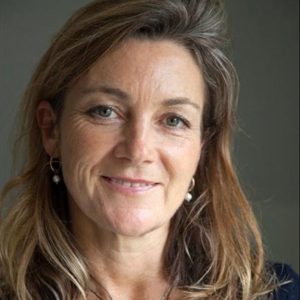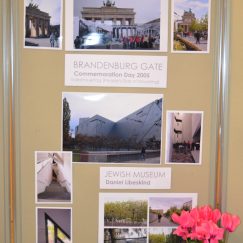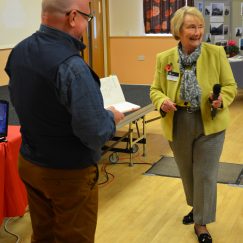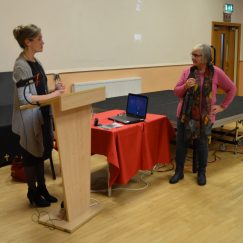
The Other Side: Counter Memorials – Germany’s Post-WWII Culture of Apology and Atonement
Wednesday 1 November 2017
Angela Findlay
 Angela Findlay is a professional artist, writer and freelance lecturer with a long standing interest in the role the arts and the creative process can play in bringing about changes, on a personal level or within societies. Her long career of teaching art in prisons and Young Offender Institutions in Germany and England, followed by her role as the former Arts Co-ordinator of the Koestler Trust in London, gave her many insights into the huge impact the arts can have in terms of rehabilitation. She is currently advising the Ministry of Justice and presenting the case for the arts to be included in their new rehabilitation and education policies.
Angela Findlay is a professional artist, writer and freelance lecturer with a long standing interest in the role the arts and the creative process can play in bringing about changes, on a personal level or within societies. Her long career of teaching art in prisons and Young Offender Institutions in Germany and England, followed by her role as the former Arts Co-ordinator of the Koestler Trust in London, gave her many insights into the huge impact the arts can have in terms of rehabilitation. She is currently advising the Ministry of Justice and presenting the case for the arts to be included in their new rehabilitation and education policies.
In the past decade Angela’s Anglo-German roots led her to discover and research Germany’s largely unknown but fascinating post-WWII process of remembrance. So completely different to the British one, the arts once again play a huge and vital role in expressing the apology and atonement that underlies the country’s unique culture of memorials and counter memorials.
Angela has a BA (Hons) in Fine Art, a Diploma in Artistic Therapy (specialising in colour) and her paintings are widely exhibited both nationally and internationally.
Please see Angela’s website for more information. Twitter
In these years of World War 2 Anniversaries the subject of this talk is hugely relevant. Relatively little is known in this country about Germany’s complex post-war process of remembrance and the counter memorial movement that started there in the 1980s and continues to this day.
Germany’s very specific situation rendered all traditional concepts of monuments and memorials irrelevant and inappropriate. Instead of commemorating their own losses German artists looked to creating art forms that would respond to questions of apology and atonement: How does a nation of former persecutors mourn its victims?
The idea behind counter memorials is to keep the memories and lessons of the past alive in the individual psyches of the people. The results are extraordinary, brave, and inspiring.
With her Anglo-German roots, artistic background and years of research, Angela is in an ideal position to give insights into Germany’s fascinating and on-going efforts to find artistic forms for the remembrance of the victims of one of history’s darkest periods.
Caption: Memorial to the murdered Jews of Europe, Berlin: designed by architect Peter Eisenman and engineer Buro Happold
Suggested Further Reading:
- The Texture of Memory: Holocaust Memorials and Meaning – James E. Young, Yale University Press (1994)
- Germany – Memories of a Nation – Neil Macgregor, Allen Lane (2014)
The German War, a Nation under Arms – Nicholas Stargardt, Basic Books (2015) - Within the context of memory studies, what is postmemory and how can art or artists help postmemory generations process atrocities and histories that are not their own doing? What role, if any, can ‘affective’ art play within the context of post-war Germany? – Angela Findlay (February 2010) available at: http://www.angelafindlaytalks.com/wp-content/uploads/2016/03/Dissertation-within- the-context.pdf
The notes for this lecture can be downloaded and printed here.
Below are photos of this lecture
- Information boards
- Information boards
- Chair Jo Darbyshire
- Lecturer Angela Findlay
- Vote of thanks from Sue Cornah














